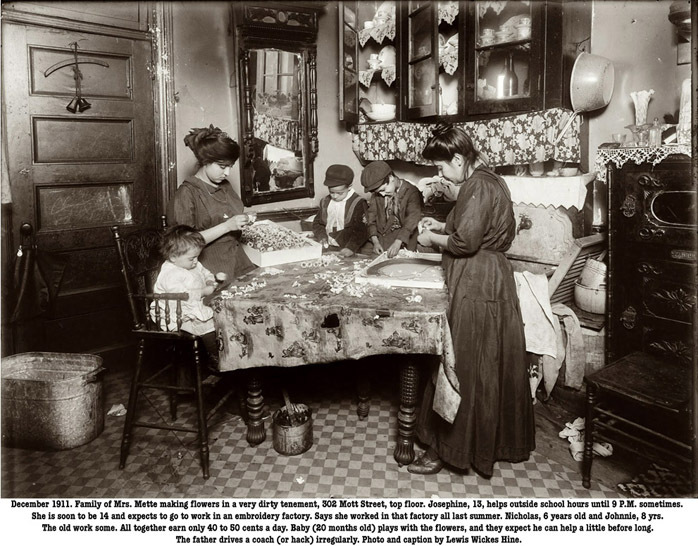From The Peopling of New York City
When the Irish first arrived in New York City in the late 18th century, they mostly traveled in family units or as single members here to raise enough money to bring the rest of the family to this country. These immigrants consisted of farmers and poor unskilled laborers who were used to a rural life. When they arrived as a whole family, the husband was usually the head who worked to support the family; but on some occasions, the wife would find work too (usually works that could be done at home), since the husband's earning was not enough to feed the family. These Irishmen took in dangerous unskilled labors, such as works on docks or on construction sites, and many died in work-related accidents. The widows and children of these victims would usually suffer from starvation and homelessness. When the family was headed by a single female authority, she often found work as an industrial laborer and also suffered a high rate of work-related accidents.[1]
Children of these poor Irish families (as young as toddlers) often had to work at home to raise extra money; they would help their mothers out with such works as making flowers and sewing clothes. And like their parents, these children had to work very long hours on tedious labors. Many young and single Irish girls from these poor families of the slums, however, chose to become nuns and served their communities instead. Others went into domestic works and were labeled as "Bridgets." These young women chose to work as domestic servants mainly for the free meals,free housing, and the opportunity to save up money for their dowries. However, the downside of this type of work was that they had to work long hours and a few suffered abuse by their employers.[2]
Although some children decided to work, as mentioned above, many Irish parents chose to send their children to private Catholic schools in order for them to get a good education, and as a way to have a better future. And since the Irish were mostly devoted Catholics, they often go to their local Irish Catholic churches as a family during their free times.[3]
References
- ↑ Binder, Frederick M., and David M. Reimers. All the Nations Under Heaven. New York: Columbia UP, 1996. 60.
- ↑ Binder, Frederick M., and David M. Reimers. All the Nations Under Heaven. New York: Columbia UP, 1996. 61.
- ↑ Binder, Frederick M., and David M. Reimers. All the Nations Under Heaven. New York: Columbia UP, 1996. 66-70.
